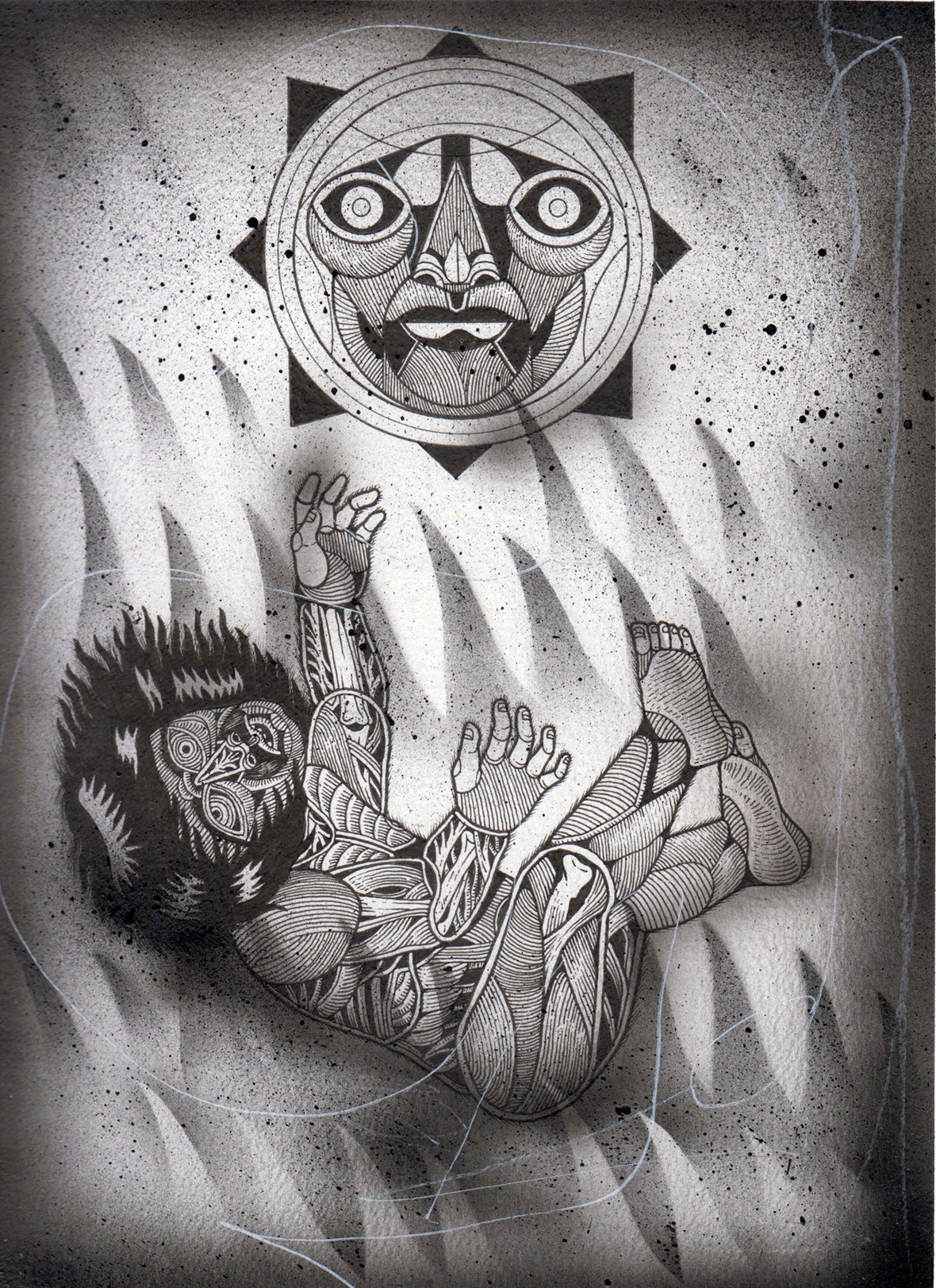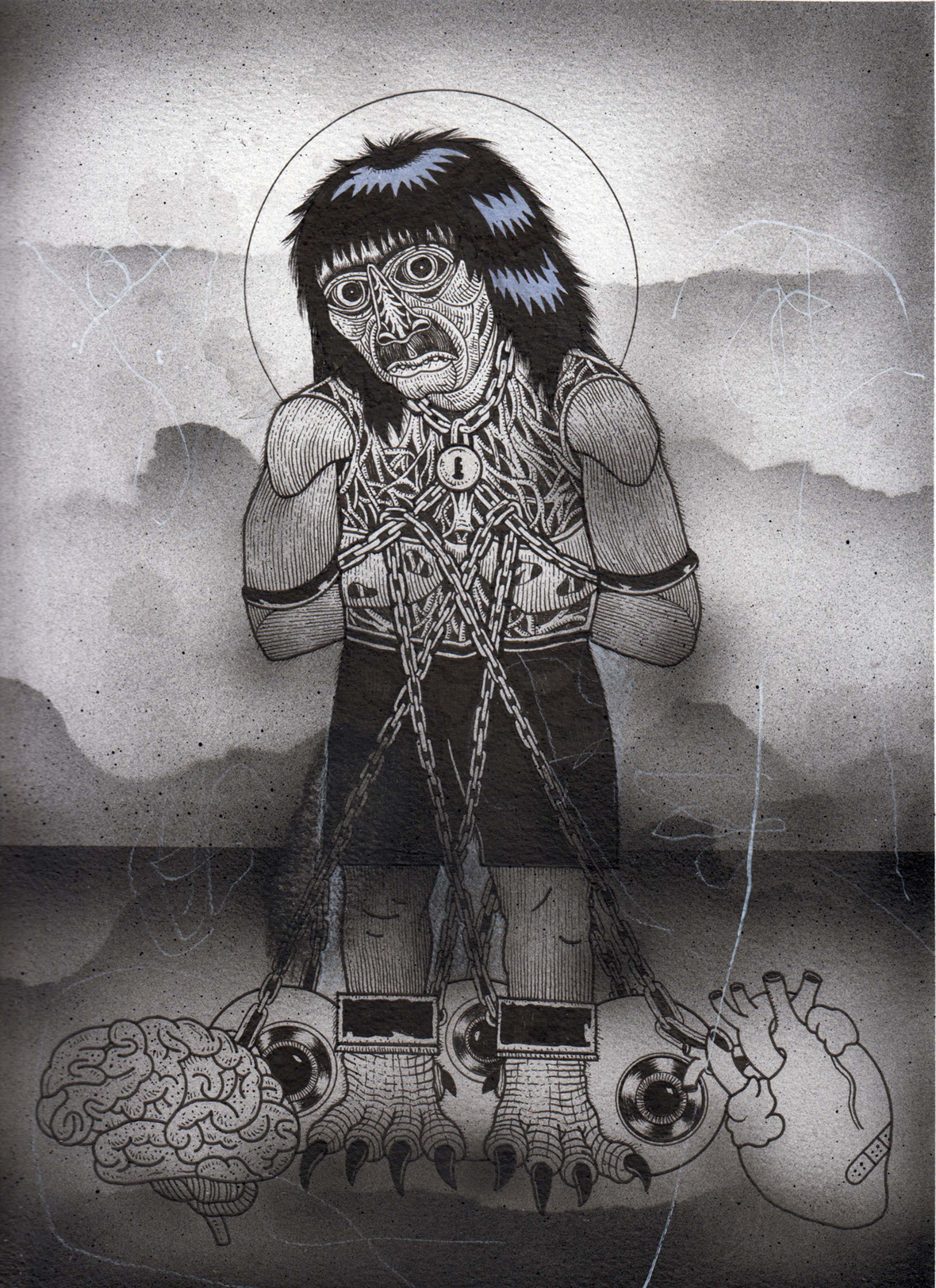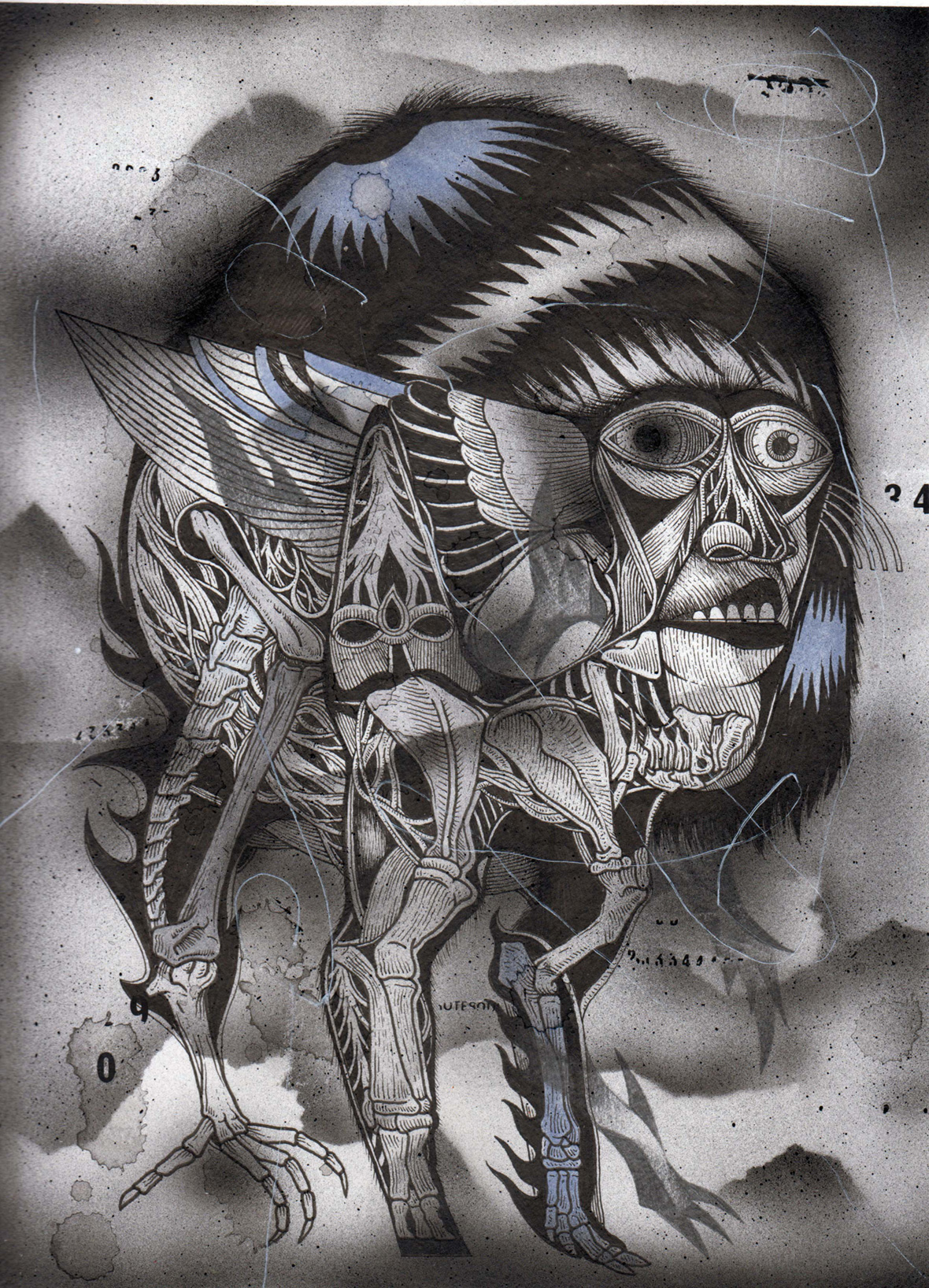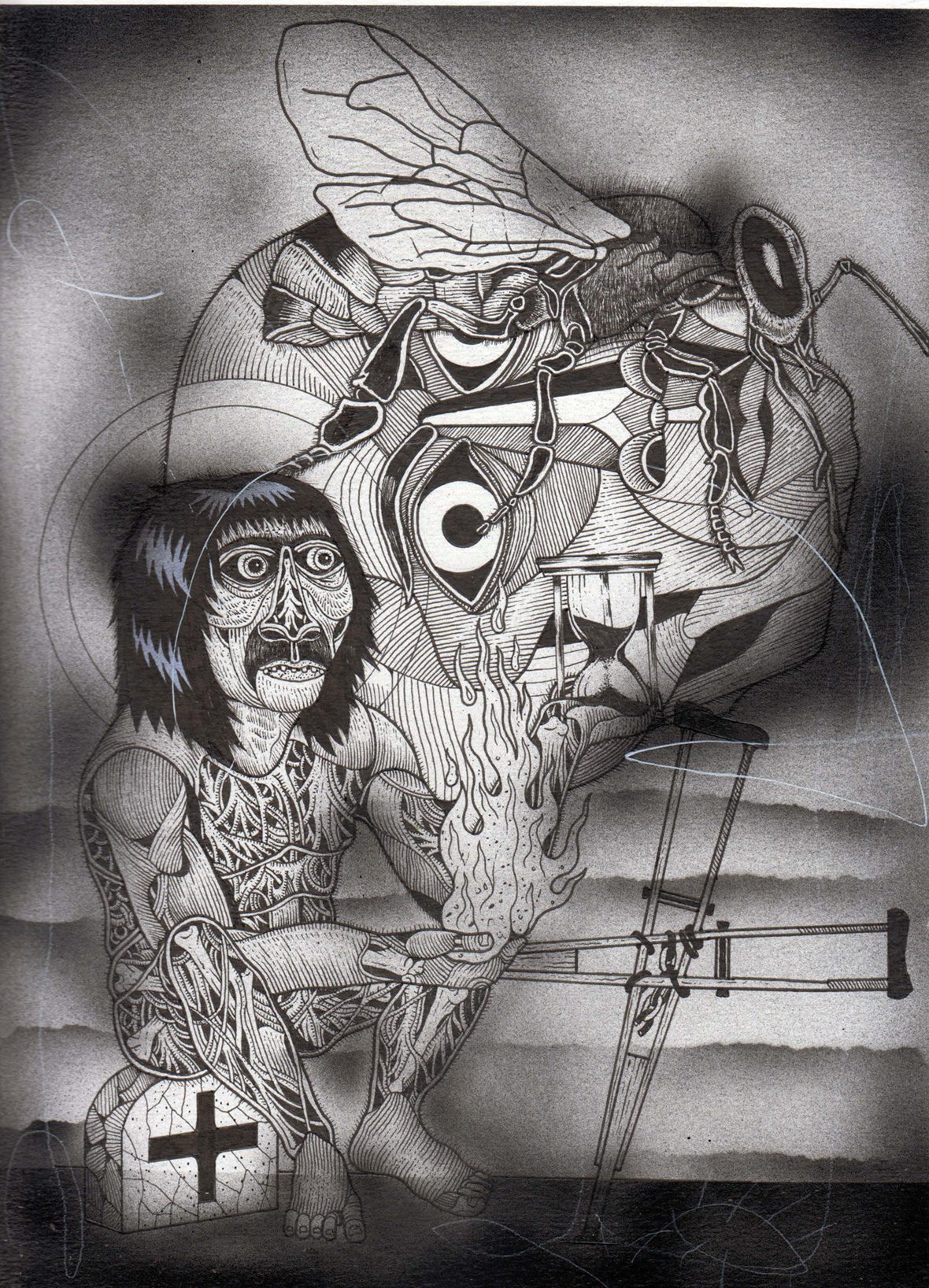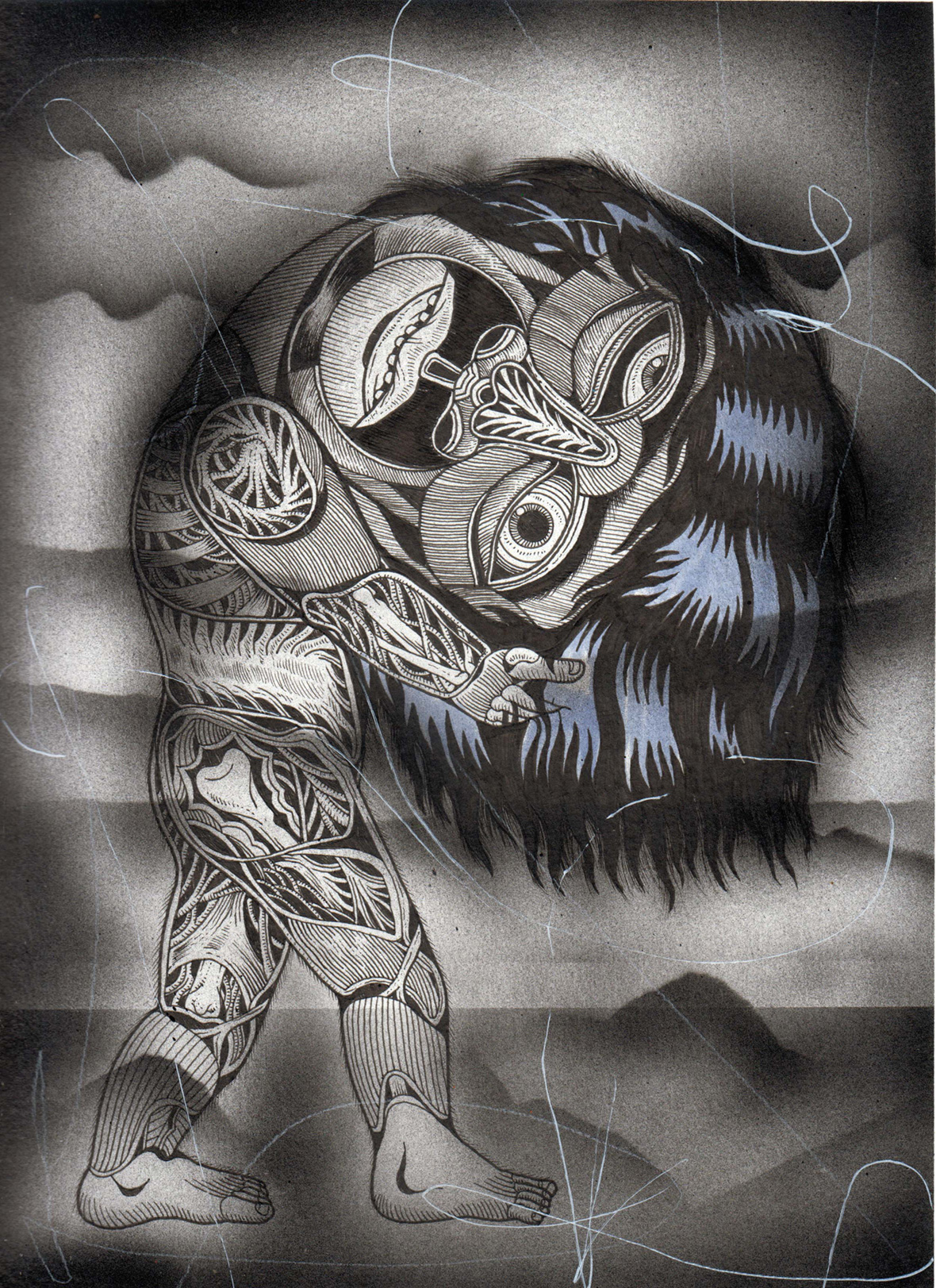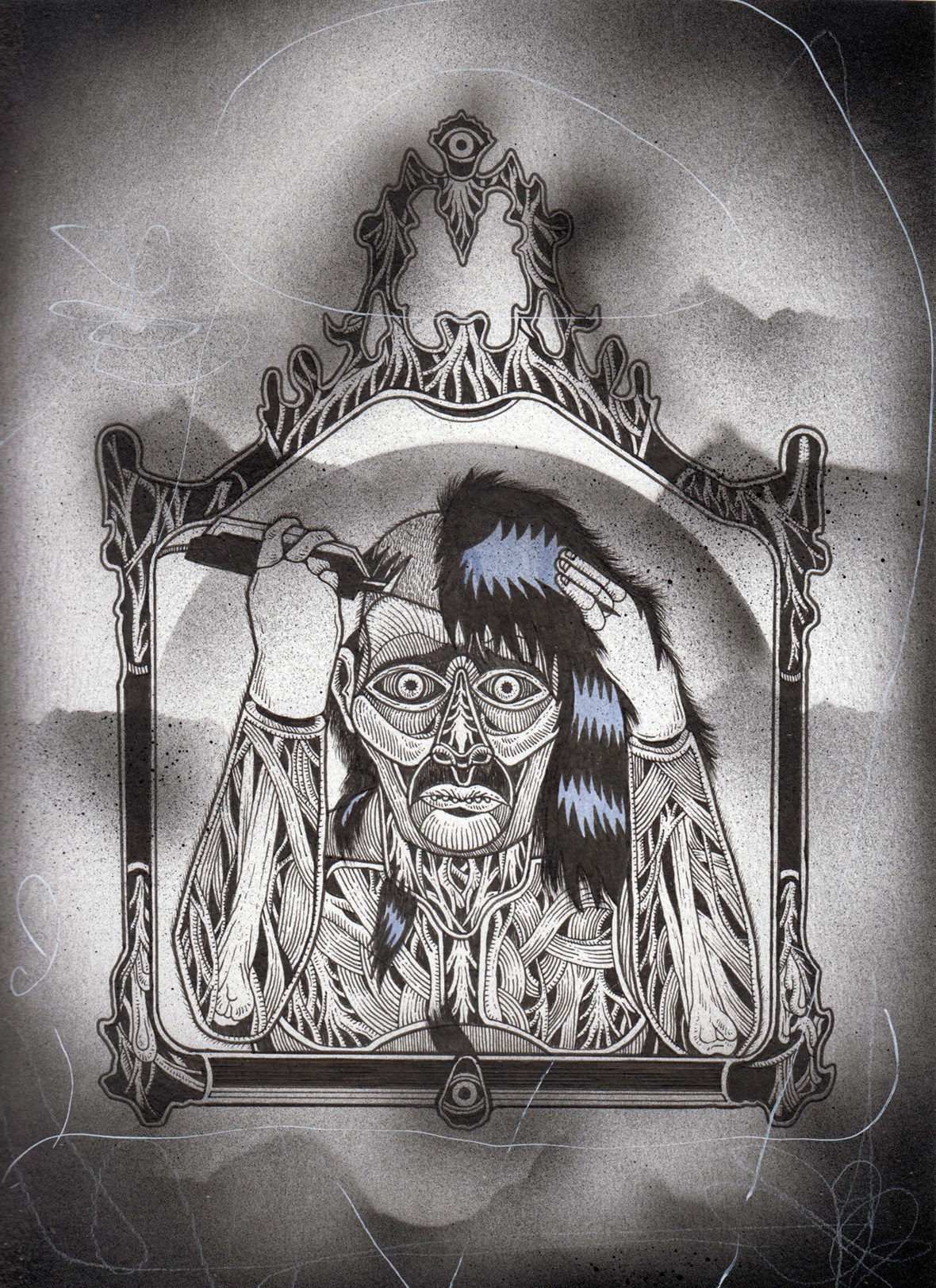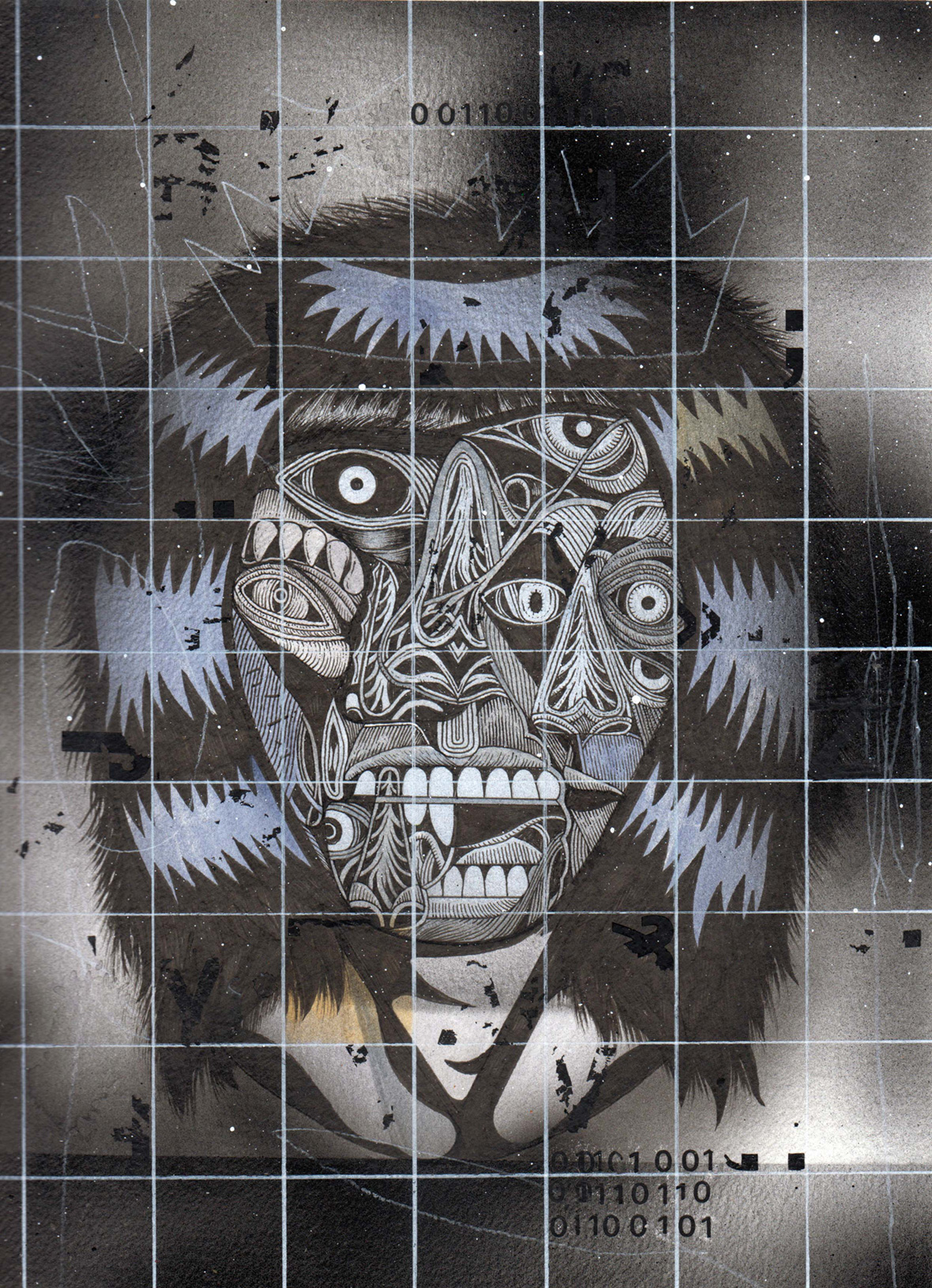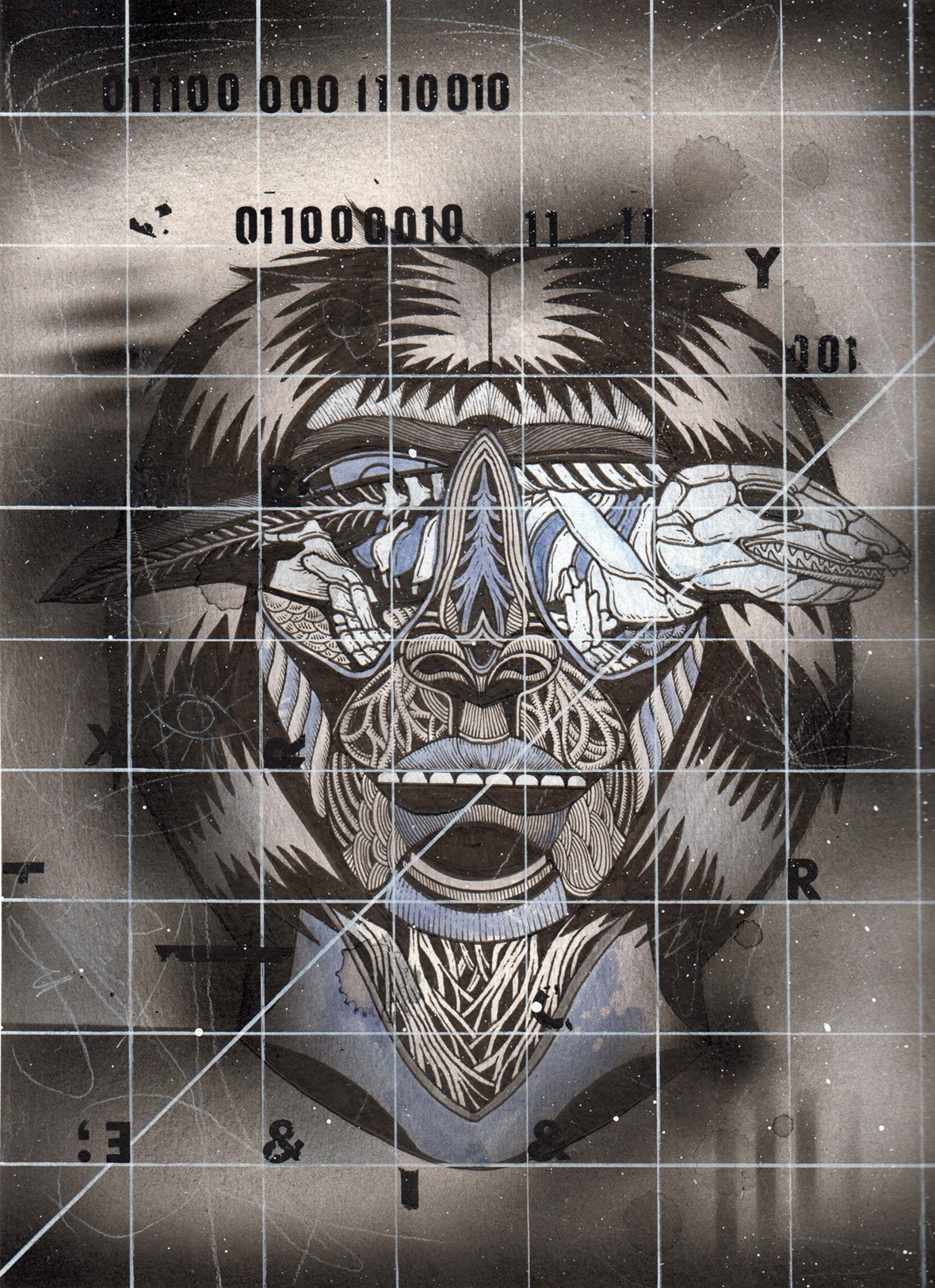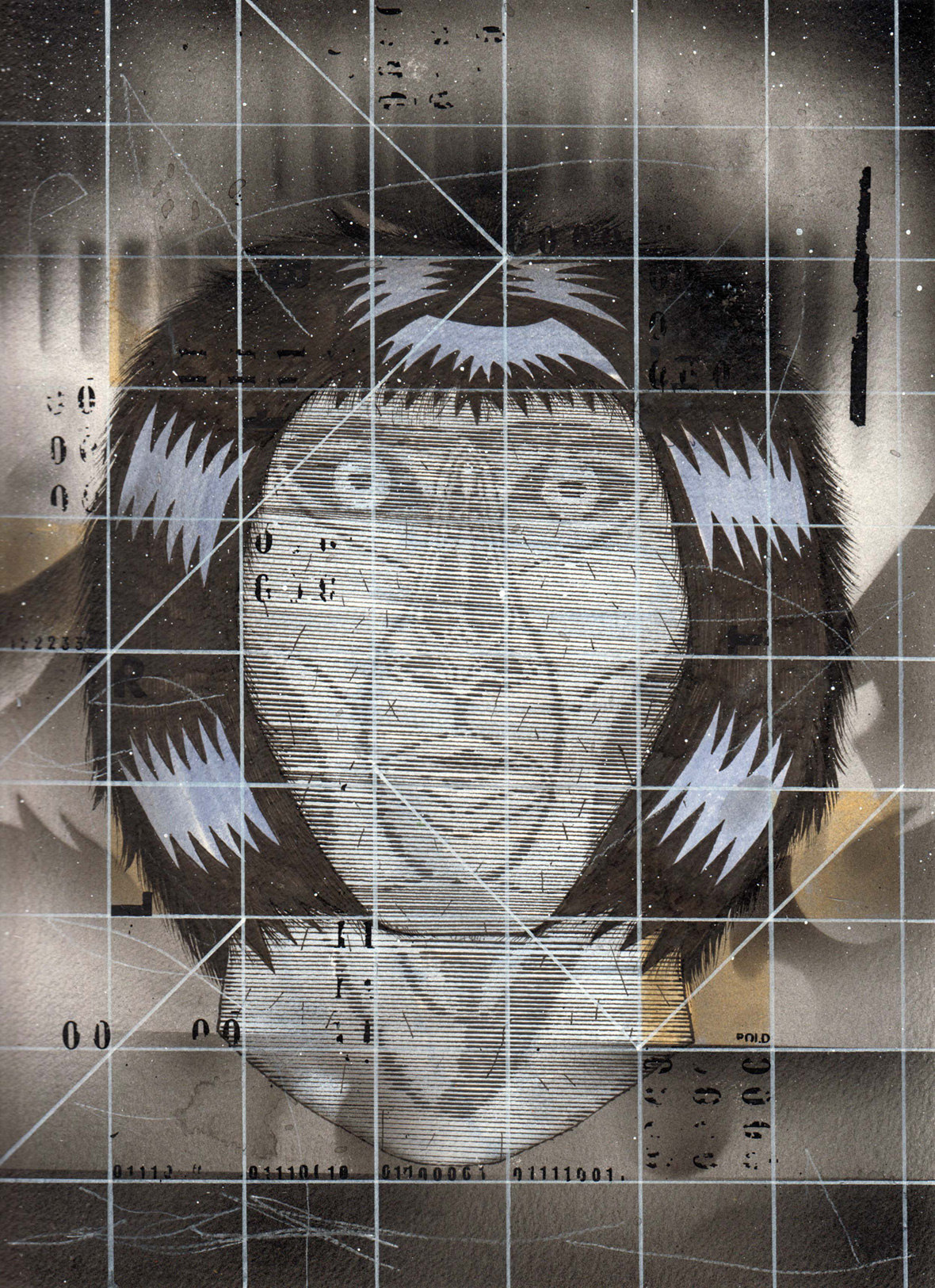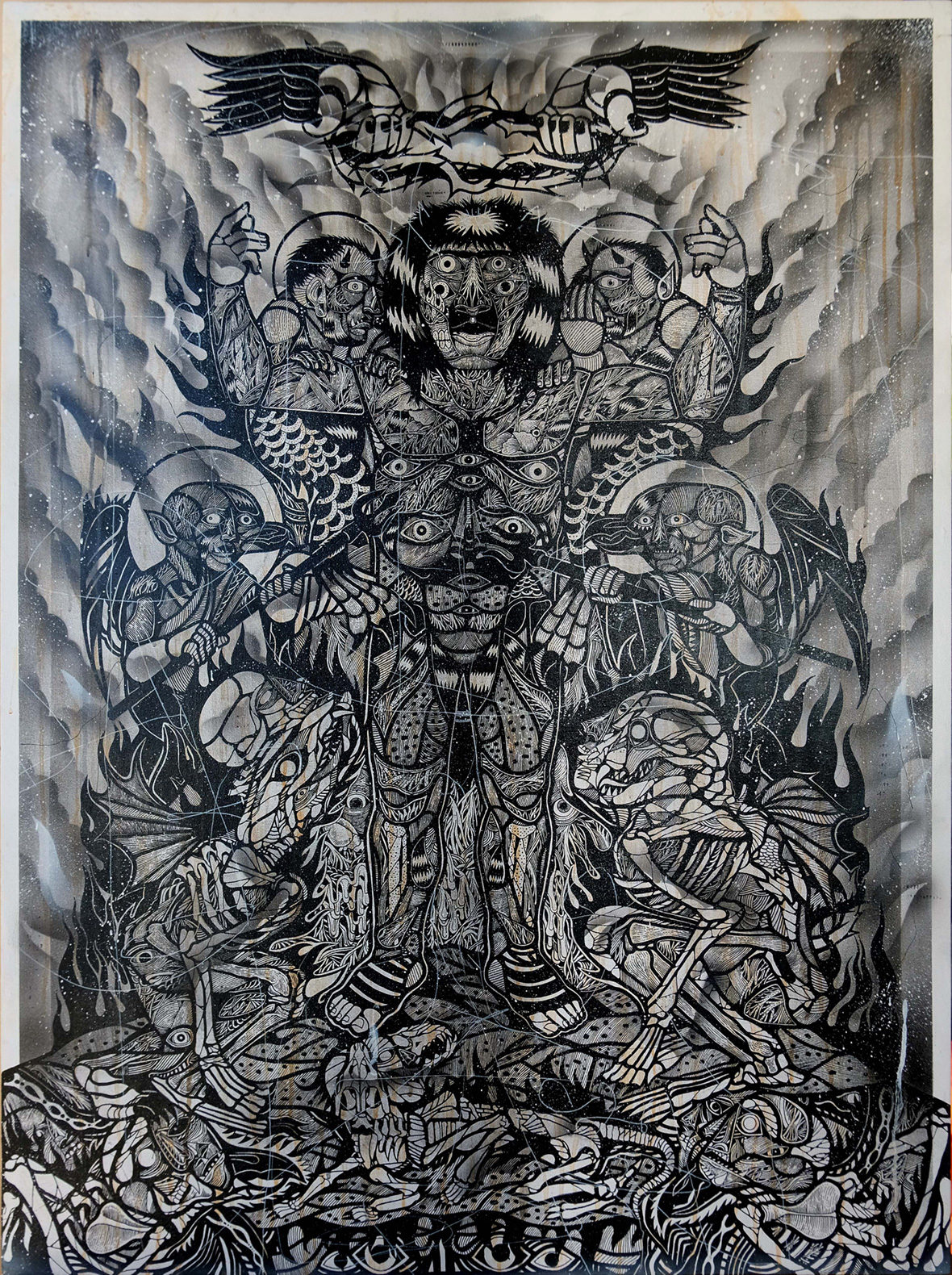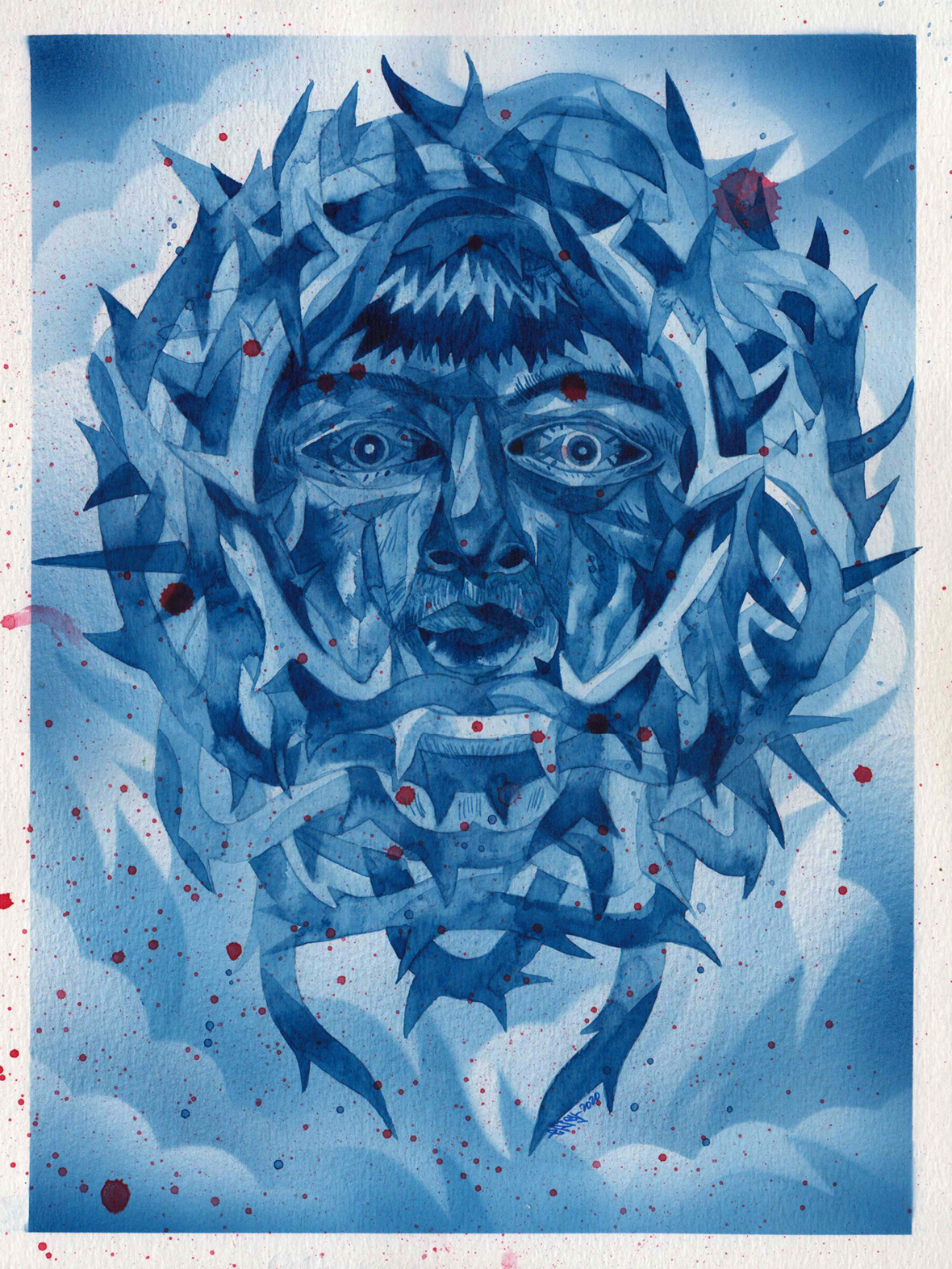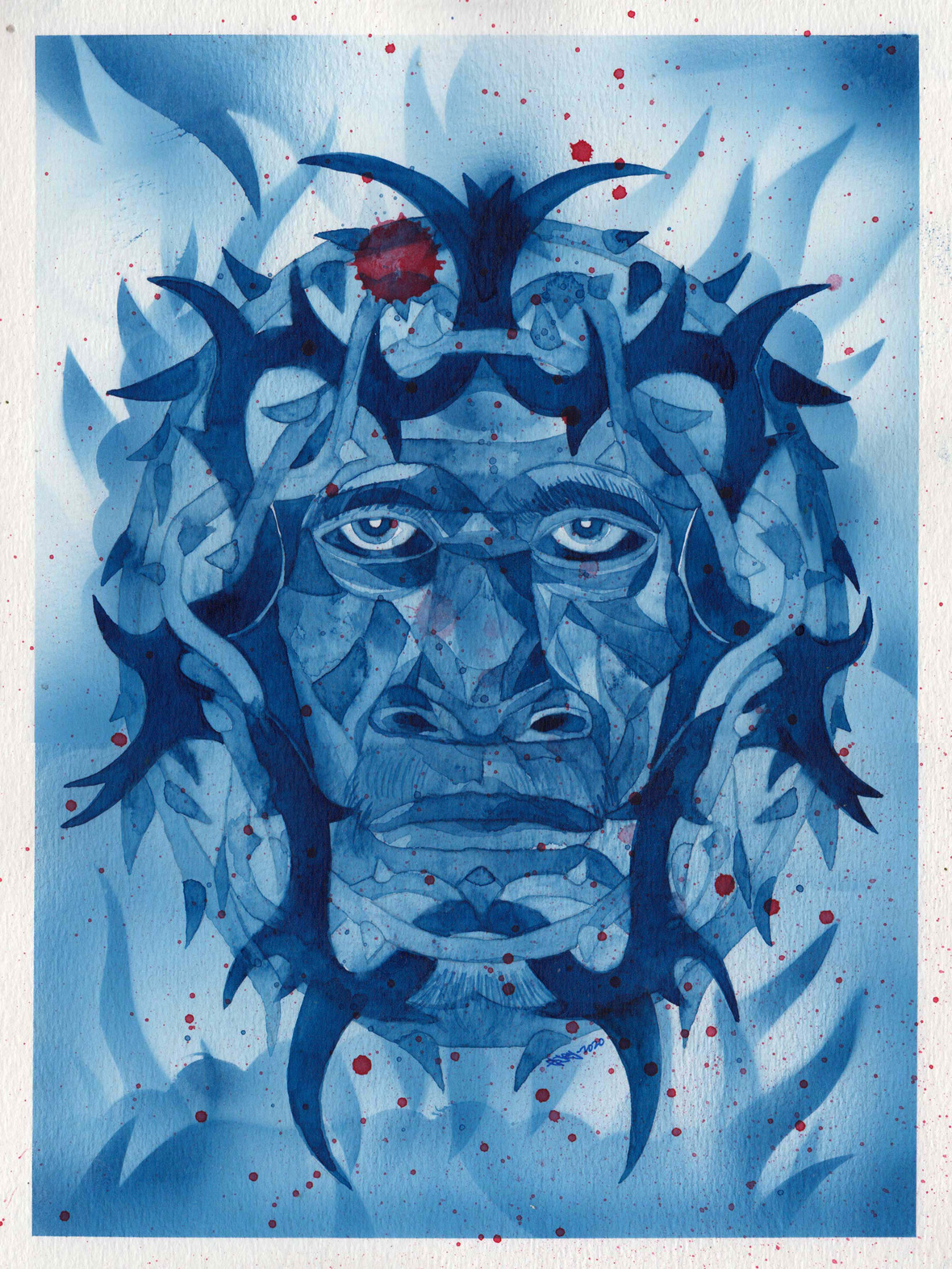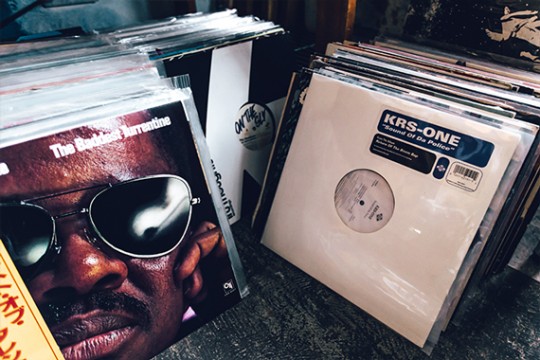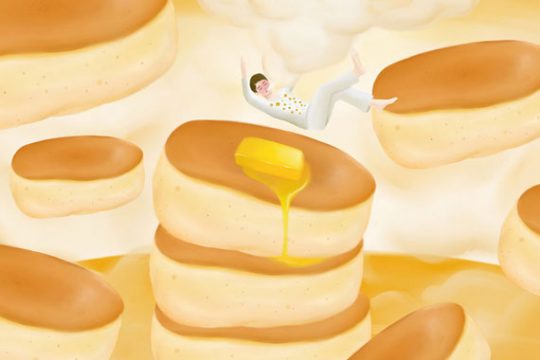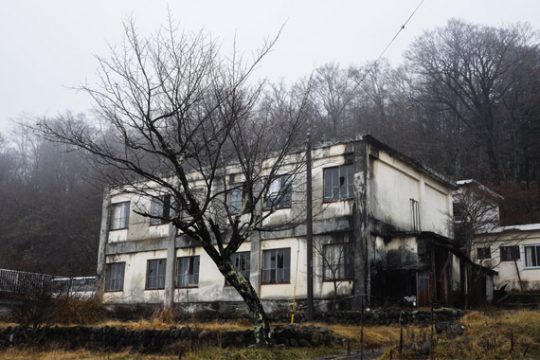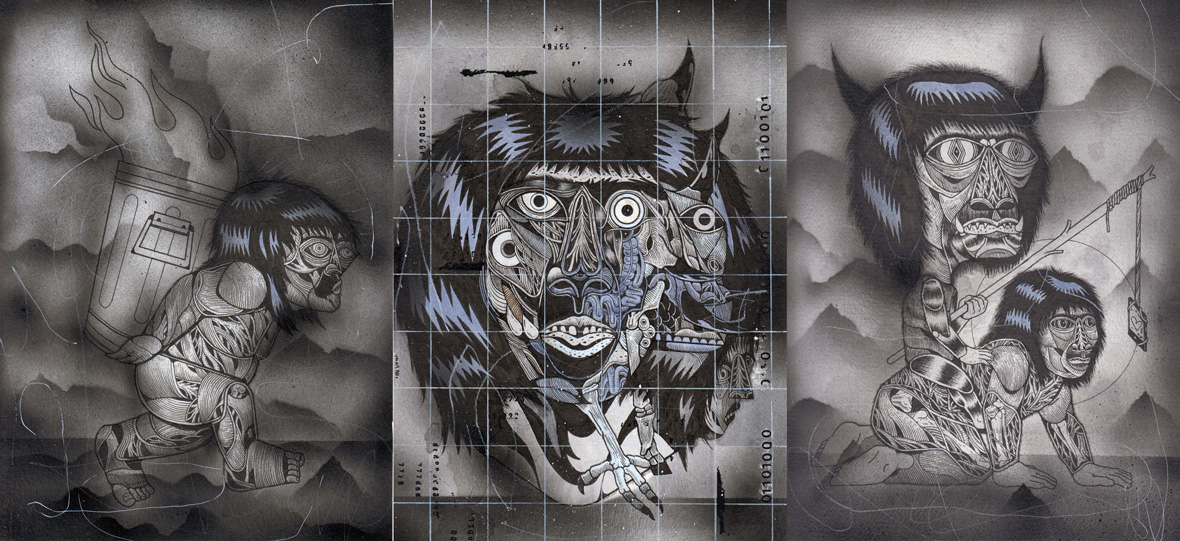
Art provides a unique means of coping in times of crisis. It allows artists to express themselves and for viewers to find common ground through the experiences of others. To try and deal with the effects of the pandemic, Filipino artist Epjey Pacheco has produced a large body of work exploring the psychological challenges of life during cascading lockdowns and his experiences with death. “Art has always been a way for me to express things I can’t put into words, feelings that I can’t comprehend,” he explains. “My work is a reflection of my state of mind, like a timestamp of whatever I was feeling or thinking at that moment.”
Pacheco’s Into The Haze series is a mixed-medium collection of greyscale works that wander into the foggy depths of isolation, anxiety, and pain. Even prior to this, his artwork was angsty and abrasive, touching on themes of mortality and despair. This new series, which is grounded in his first-hand experiences, is perhaps the bleakest to date. “The lockdowns have weighed on me hard,” he says. “Not seeing friends or loved ones. My father got sick with COVID. I had to camp out in the hospital for four days to secure a private room for him. I saw the emergency ward overwhelmed with patients and crying relatives in the lobby. I witnessed a person dying who couldn’t get admitted. It really fucked me up.”
即便在人类的危难时刻,艺术也可以为人们提供一种特别的应对方式,艺术家可藉此表达自我,而观众则能从他人的经历中获得共鸣,获得内心的疗愈。面对疫情带来的影响,菲律宾艺术家 Epjey Pacheco 创作了大量作品,探索接二连三的封锁所带来的心理挑战以及与死亡相关的亲身经历。他解释说:“艺术一直是我的一种表达方式,帮助我表达无法言喻的事物,以及难以理清的情感。我的作品折射出我的内心世界,就像一个个时间戳,记录下我在当下那一刻的感受或思考。”
Epjey 的《Into The Haze》(深入雾霭) 是一系列采用混合媒介创作的灰色调作品,带领观众走入孤立、焦虑和痛苦的迷雾深处。其实在此之前,他的作品也常常充满着焦虑和不快的氛围,探讨死亡和绝望这类主题,但从风格来说,这个基于他亲身经历而创作的系列可能是迄今为止最黯淡的。他说:“封锁给我带来了沉重的打击。我见不到朋友或亲人。我父亲也感染上了新冠肺炎,我在医院搭帐篷露宿了四天,只是为了让他能够排上床位。我看到急诊室里挤满了病人,大厅里都是哭泣的亲人,还亲眼目睹无法入院的人离世。这一切对我的打击很大。”
In the series, airbrush-stenciled fog and silhouetted mountains float mysteriously in the background. A wild creature, painted with ink, watercolor, and acrylic, roams the monochromatic landscape. “This is the damuho character I formulated specifically for the series,” Pacheco says, explaining that it’s a Tagalog derogatory term roughly translating to “savage” or “ignorant.”
“When things get out of hand and human instinct kicks in, survival and savagery ensue,” Pacheco says. “I distinctly remember that feeling in a local grocery store while looking for alcohol and masks as people went on panic buying sprees just before the start of the first lockdown.”
系列中,模版喷枪的迷雾与山脉剪影神秘地漂浮在背景中。而在黑白色的风景中,一只用墨水、水彩和丙烯颜料绘画的野兽徘徊其中。Epjey 说:“这只野兽是我专门为这个系列创作的角色‘damuho’。”Damuho是一个带贬义的他加禄语用词,大意为“野蛮”或“无知”。
他解释道:“当形势失控,人类的本能被激发出来,生存竞争和野蛮行径也就随之而来。我清楚地记得就在第一次实施封锁措施时,我到当地杂货店买酒精和口罩时的那个场景,所有人都在争先恐后地争抢商品。”
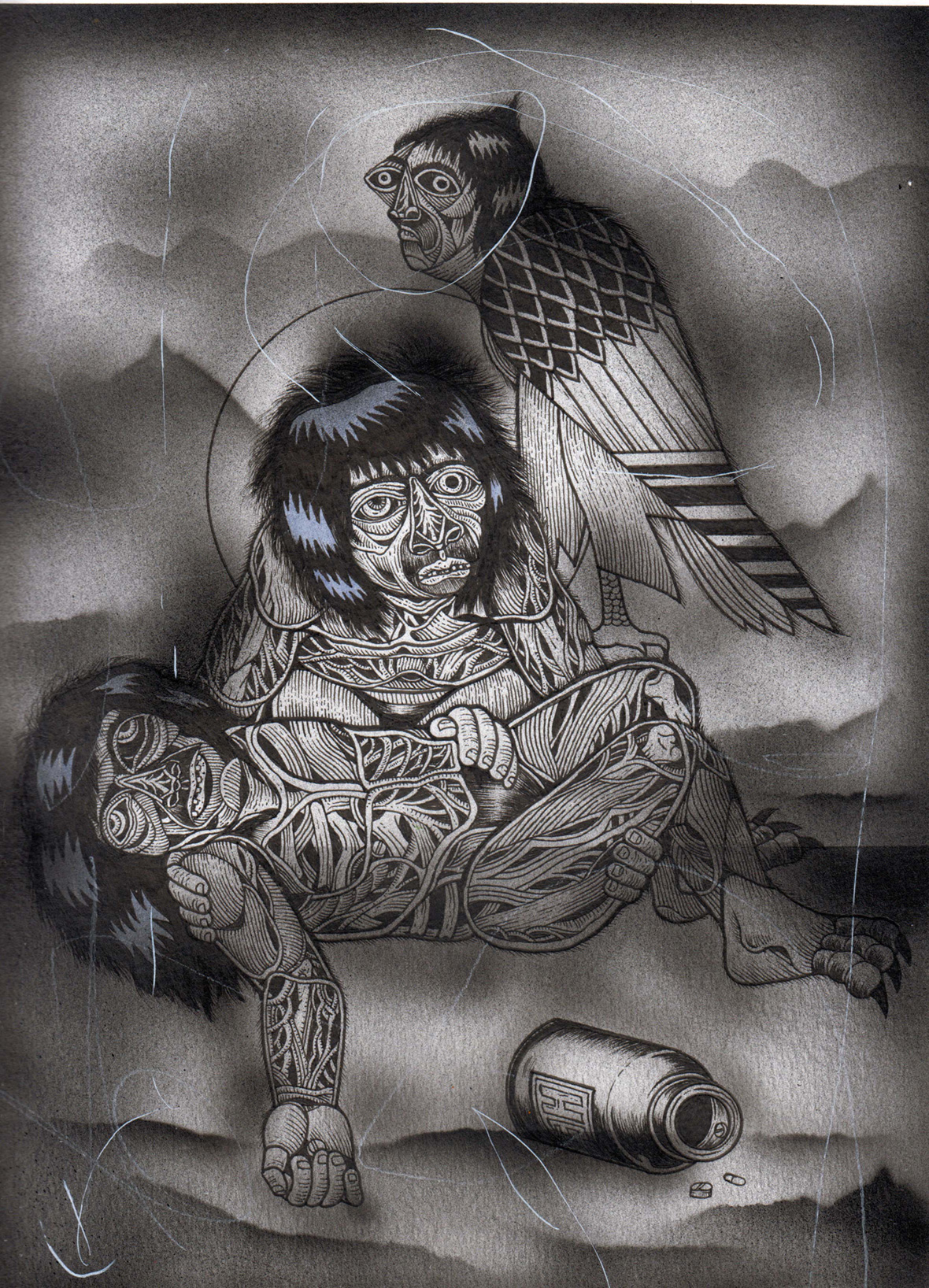
To portray these primitive instincts, Pacheco’s damuho is drawn like a primate or neanderthal, with unkempt hair, a muscular physique, and exposed nerves and tendons. In one illustration, he’s riding atop a rocket, and in another, he’s curled up drunk at the base of a goblet. “War and religion are some of the most common preoccupations of men,” he explains of these two drawings.
A mash-up of animal parts, other Catholic symbols, and confusing limbs are common motifs in other scenes. In several images, the damuho is seen unraveling as he stares into the mirror, a visualization of its rapidly declining mental state.
Damuho 形似灵长类动物或尼安德特人,披头散发、肌肉发达。他的神经和肌腱在暴露在外,或乘坐着火箭,或烂醉如泥地蜷缩于高脚杯下。他解释了画中出现的因素:“战争和宗教是人类最关注的问题之一。”
在其他作品中,动物部位、天主教符号和交缠的四肢也是常见的元素。在其中几幅作品中,镜子中的 Damuho 已处于几近崩溃的精神状态。
There’s an immediacy to Pacheco’s work, the feeling that he’s rushing to get his feelings down on paper while they’re still vivid in his mind and soul. Although the series was planned and based on a pile of sketches drawn beforehand, that directness is a result of his temperament and inspirations. “I’m very impatient, so I don’t like to wait around for oil paints to dry. I also like the fact that there’s no erasing once I make a mark with ink on paper—there are no do overs.” This is also true of tattoo art, which he draws direct reference from, particularly traditional tattoos with their angular shapes, bold lines, and condensed imagery.
Epjey 的作品有一种急切感,感觉他正迫不及待要将让自己当下内心的感受宣泄在纸上。尽管他在创作整个系列时,已事先构思好,并画了一堆草图,但这种急切感其实来源于他的性格和创作灵感。“我是个很没耐心的人,我不喜欢坐等油画颜料干燥,我更喜欢落下的每一笔都不会被擦掉,这样就没有任何多余的笔画。”这一点与纹身艺术不谋而合,而纹身其实也是他的灵感来源之一,特别是棱角分明、线条醒目和意像凝炼的传统纹身。
Alongside Into The Haze, Pacheco created a diptych in baroque style, titled Fragility and Torment. These works are similarly done in black and white, but the scenes are much more complicated, with skeletal body parts and unsettling eyeballs throughout the composition.
Then there is his Safe Haven series, which revolves around the theme of searching for peace in a tempestuous world. In wanting to convey a sense of calm, he abandoned the blacks-and-whites of his previous series for soothing blues. “I wanted a serene feel to the series, as the name implies, hence the colors and softer textures,” he says. “I think I was trying to reassure myself that everything will be fine eventually, while in reality, I was really scared.”
除了《Into The Haze》(深入雾霭) ,Epjey 还创作了巴洛克风格的双联画,取名《Fragility》(脆弱) 和《Torment》(折磨) 。这些作品同样为黑白色,但有着更强烈的情绪,整个画面充斥着露骨与痛苦。
此外,他还创作了《Safe Haven》(安稳天堂) 系列,以柔和的蓝色调和严肃的气氛,来表达在动荡世界中寻求和平的主题。他说:“顾名思义,我想创作一个风格相对缓和的系列,颜色和纹理会和之前不大一样。我大概是想努力让自己相信,一切都会好起来的,但现实中的我其实充满恐惧。”
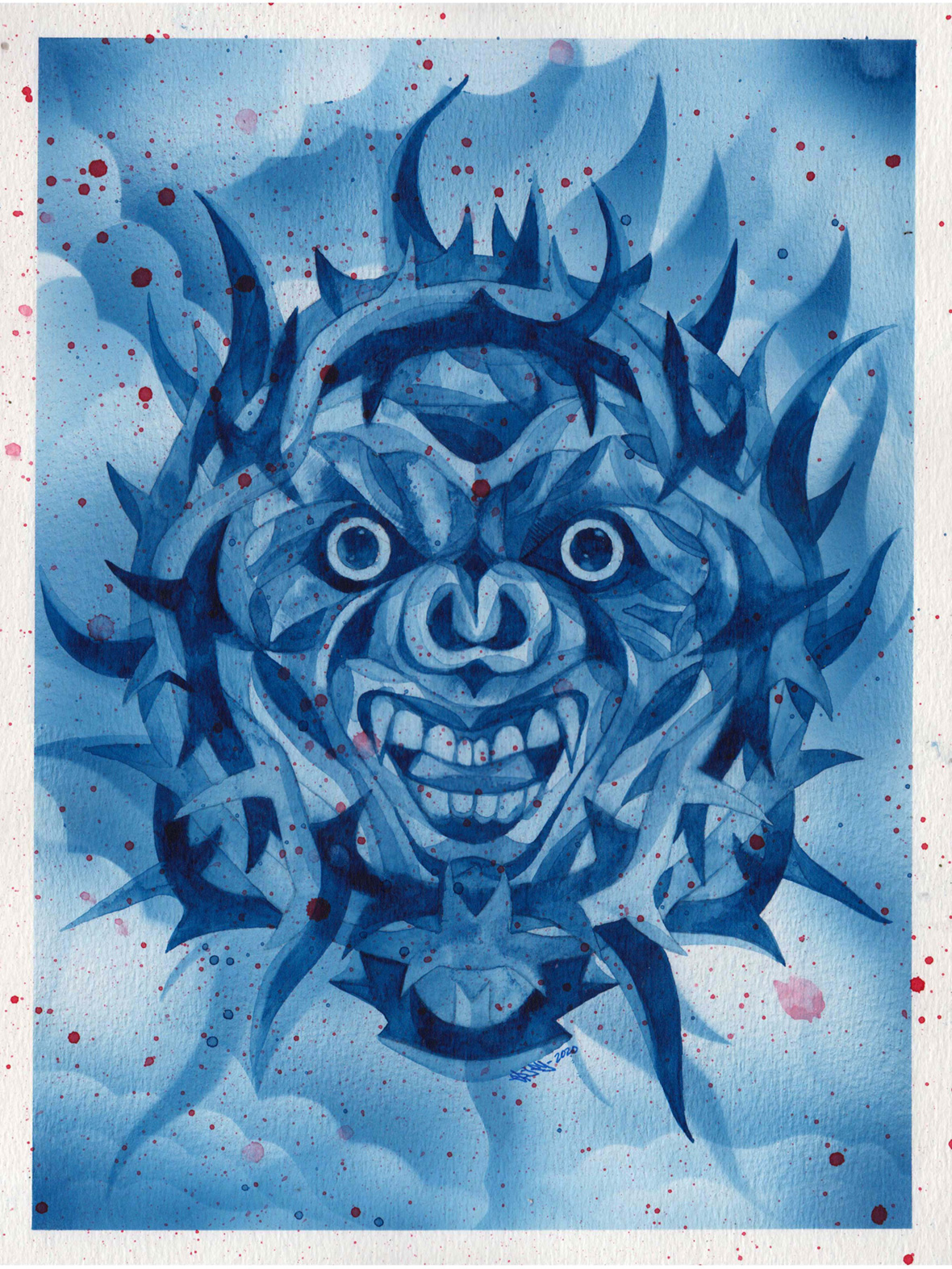
Through these turbulent months, his artwork has been a much-needed relief valve. In fact, he’s been more productive than ever during the pandemic. But that in itself is a manifestation of some problems. “The energy that fuels my work these days can be a bit toxic,” Pacheco notes. “It’s a product of inner turmoil. So I don’t know if I need to cut down a bit or what.”
Overall, he counts himself lucky. “I’m acutely aware of how much luckier I am than most. Being able to continue drawing and practicing my art in times like this has made me appreciate it all so much more.”
在这动荡不安的一年半里,艺术创作成为了他必不可缺的减压阀。事实上,他在疫情期间比以往任何时候都更高产,但这本身就说明了问题。Epjey 指出:“最近我的创作动力来源可能不那么健康,更多是一种内心不安的产物,所以我也不确定自己是否应该放慢一下。”
总的来说,他认为自己很幸运。“我清楚地意识到我比大多数人幸运得多,因为在这样的时期,我还能继续画画和创作,我也因此心存感激。”
Like our stories? Follow us on Facebook and Instagram.
Instagram: @epjey
Contributor: Mike Steyels
Chinese Translation: Olivia Li

